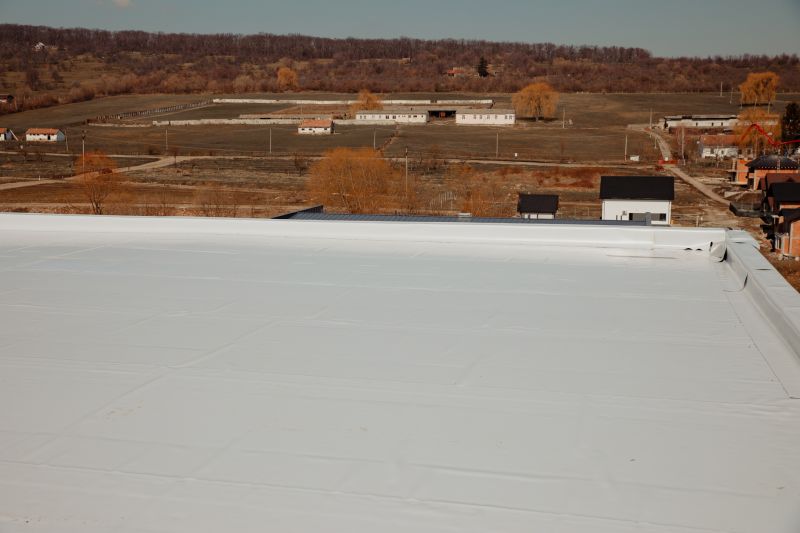Favorite Roofing Service Gear For Efficient Workflows
Identify the most trusted equipment and accessories that enhance productivity and safety on roofing jobs.
 In the realm of roofing services, having the right products is essential for ensuring quality work and long-lasting results. From tools that facilitate precise measurements to materials that withstand the elements, a comprehensive selection of roofing products can significantly impact project outcomes. For professionals and DIY enthusiasts alike, understanding the variety of available products helps in making informed decisions tailored to specific roofing needs.
In the realm of roofing services, having the right products is essential for ensuring quality work and long-lasting results. From tools that facilitate precise measurements to materials that withstand the elements, a comprehensive selection of roofing products can significantly impact project outcomes. For professionals and DIY enthusiasts alike, understanding the variety of available products helps in making informed decisions tailored to specific roofing needs.
Top Overall Option
Roofing Tool Kit
A comprehensive roofing tool kit typically includes essential items such as hammers, pry bars, utility knives, tape measures, chalk lines, and safety gear. These kits are designed to provide a versatile set of tools that support various roofing tasks, making them ideal for both professionals and DIY enthusiasts. Selecting a well-rounded tool kit can enhance efficiency, safety, and precision during roofing projects.
Types of Products For Roofing Service
Roofing Nails and Fasteners
Used to secure roofing materials firmly in place, available in various sizes and coatings to suit different roofing types.
Roofing Underlayment
Protects the roof deck from moisture and provides an additional barrier against water infiltration.
Metal Roofing Sheets
Durable panels suitable for various roof styles, offering longevity and resistance to harsh weather.
Asphalt Shingles
Common roofing material providing a versatile and cost-effective covering for many residential roofs.
Roofing Sealants and Adhesives
Sealants help prevent leaks and seal joints, while adhesives bond roofing components securely.
Roofing Safety Harnesses and Gear
Essential safety equipment designed to protect workers during installation and repairs at heights.
Roofing Flashing
Metal pieces installed around chimneys, vents, and valleys to direct water away from critical areas.
Roofing Ventilation Products
Includes ridge vents, soffit vents, and attic fans to promote airflow and prevent moisture buildup.
Roofing Cleaning Tools
Tools such as roof brushes and pressure washers used for cleaning debris and moss from roofing surfaces.
Roofing Repair Patches
Patch kits designed for quick repairs of minor damages or leaks in roofing materials.
Roofing Drip Edge
Metal edging installed along roof edges to direct water away from fascia and prevent water damage.
Roofing Insulation Materials
Insulation options to improve energy efficiency and thermal regulation within the building.
Roofing Measuring Tools
Includes laser distance meters and traditional tape measures for accurate measurements during installation.
Roofing Edge Metal
Protects the roof edges and provides a finished look while preventing water infiltration.
Roofing Fastening Guns
Power tools designed to quickly and securely attach roofing materials with nails or staples.
Popular Choices
A power tool that speeds up the process of fastening shingles and other roofing materials.
Pre-rolled layers of protective material used beneath shingles or other roofing surfaces.
Widely used for their durability and modern appearance across various roofing projects.
Popular roofing material due to ease of installation and variety of styles.
A critical safety item for working at heights, providing fall protection during roofing tasks.
Tool used to apply sealants and adhesives precisely around flashing and joints.
Installed on vents to prevent water ingress and enhance ventilation.
Used for removing moss, algae, and debris from roofing surfaces to maintain appearance and function.
Set of flashing materials for sealing roof penetrations and valleys.
Helps in inspecting hard-to-see areas of the roof for damage or wear.
Pre-packaged sealants for quick application to minor leaks and cracks.
Metal or vinyl trim that provides a clean finish along roof edges and helps prevent water damage.
Electric fans installed in the attic to improve airflow and reduce moisture buildup.
Handheld wheel for quick measurements of roof dimensions.
Specialized ladders designed for safe access to roofing surfaces.
Roofing projects often require durable materials that provide protection against weather conditions, as well as equipment that enhances safety and efficiency. Proper selection of roofing tools and accessories can streamline installation processes while maintaining high standards of craftsmanship. Whether repairing, replacing, or installing new roofs, the right products contribute to the overall success and durability of the roofing system.
It's also important to consider the compatibility of products with different roof types, such as asphalt shingles, metal roofing, or flat roofs. Additionally, factors like ease of use, compatibility with existing materials, and safety features can influence the choice of products. Investing in quality tools and materials can help mitigate issues down the line, reducing the need for future repairs and maintenance.
In Edgewood, MD, local contractors and homeowners alike seek reliable roofing products that meet their specific project requirements. By selecting appropriate products, they can achieve professional results while adhering to safety standards. This guide aims to highlight the variety of roofing products available, emphasizing their roles in successful roofing projects and helping users navigate their options effectively.
Key Buying Considerations
- Compatibility with your specific roof type and materials.
- Durability and weather resistance of the products.
- Ease of installation and compatibility with existing tools.
- Safety features included in tools and equipment.
- Cost-effectiveness and long-term value.
- Availability of replacement parts and accessories.
- Brand reputation and product reviews.
- Weight and portability of tools for ease of handling.
- Warranty and customer support options.
- Compliance with local building codes and standards.
- Versatility of multi-purpose tools for different tasks.
- Quality of sealants and adhesives for long-lasting results.
- Ease of maintenance and cleaning of tools.
- Size and storage requirements for larger equipment.
- Environmental considerations, if relevant to your project.
This page contains affiliate links. We may earn a commission if you make a purchase through these links, which helps support our content and services.
